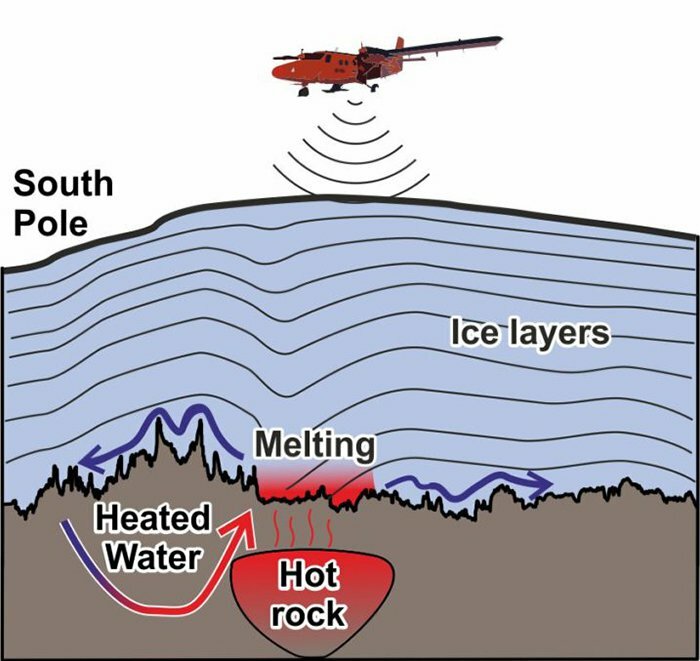Hidden Radioactive Heat Source is Melting East Antarctica from Below, Scientists Claim
Measuring the rising and falling tides of ice at the poles of our planet is a much more difficult task than one might expect. When it comes to measuring ice growth or loss, and trying to figure out what might happen next, it is said that scientists need as much data as they can get.
Now, a new study is suggesting that a powerful source of geothermal heat is actually present beneath East Antarctica, and it has yet to be factored into the calculations made by researchers trying to figure out whether the ice is melting or not, or how much it is.
In this area of the South Pole continent, ice appears to be melting not from the top down but from the bottom up, as reported by radar readings retrieved from an aircraft that flew over Antarctica. The radar managed to penetrate through nearly two miles or three kilometers of ice to successfully map out the conditions underneath it all.

(Image credit: Tom Jordan)
As the Antarctic ice sheet melts a bit at the base, what they call meltwater drains away and it tends to fill up subglacial lakes downstream.
They say this geothermal heat may not be a major factor in how the ice is melting on the South Pole, but just how much of what is causing what, it sounds like it’s difficult for anybody in the world to really make an assessment of, including scientists and people who know a lot about this.
The international team of scientists involved in the study say this geothermal factor could lead to faster melting in the future, enabling ice and water to escape more easily. However, if this has been going on for a long time and more than likely it has, how has nature regulated itself so well up to this point? Maybe we don’t have much to worry about at all.
“The process of melting we observe has probably been going on for thousands or maybe even millions of years and isn’t directly contributing to ice sheet change,” said the lead researcher of the British Antarctic Survey (BAS), Tom Jordan.
He added that in the future this geothermal activity could make the ice sheet more sensitive to external factors.
They also believe that radioactive rocks and hot water coming out from the inside of Earth’s crust is contributing to the melt as well, based on some observations taken almost 470 miles, or up to 750 kilometers inland from the shore.

(Image credit: )
The study was published in the journal Scientific Reports.
Believe it or not, scientists have quite a limited array of tools at their disposal that could be used to measure the melting and forming of ice. Without this radar technology they speak so highly of, only surface observations would be used, and you can imagine how limited that would be.
The PolarGAP project that is larger than this particular study is purported to fill in some gaps left by readings taken by a satellite that is now no longer in commission, the GOCE.
The GOCE, Gravity Field and Steady-State Ocean Circulation Explorer was utilized to map the rough, mysterious terrain beneath Antarctica in a study published just earlier this month.
So they got closer to understanding the geothermal factors, but it does seem like the scientists are insisting they aren’t much of a factor compared to climate change, who knows what the truth is because this issue is so difficult to objectively understand. Some people know about geoengineering, and some are proposing it be used to fight climate change although the environment would be saturated with aluminum if Harvard researchers had their way with that.
